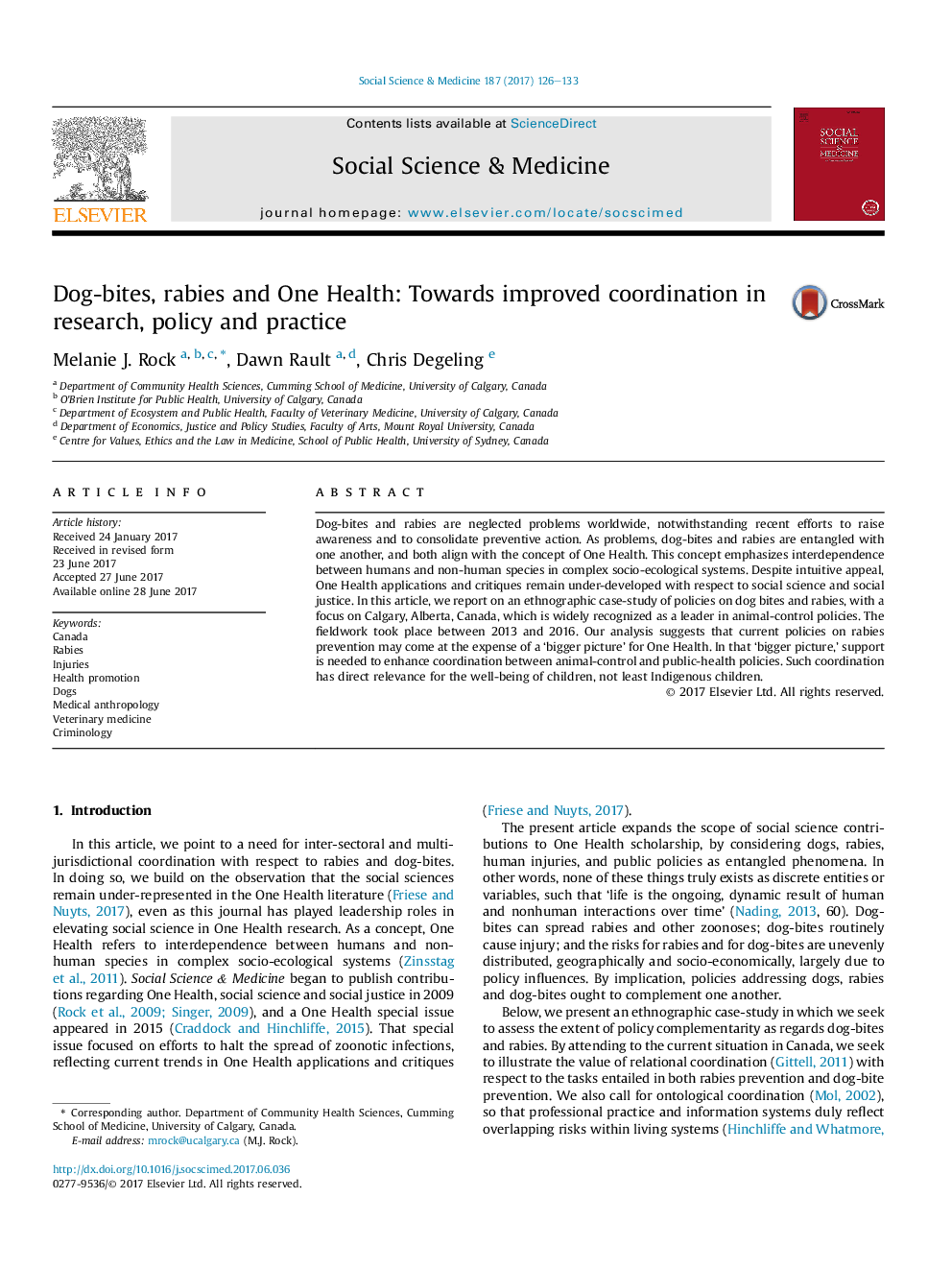| Article ID | Journal | Published Year | Pages | File Type |
|---|---|---|---|---|
| 5046469 | Social Science & Medicine | 2017 | 8 Pages |
â¢Links rabies with dog-bite injuries, as dog-related social problems.â¢Advances discussions regarding equity in public health and One Health.â¢Emphasizes that animal-related threats have socio-economic components.â¢Calls for coordination across disciplines, sectors and levels of government.
Dog-bites and rabies are neglected problems worldwide, notwithstanding recent efforts to raise awareness and to consolidate preventive action. As problems, dog-bites and rabies are entangled with one another, and both align with the concept of One Health. This concept emphasizes interdependence between humans and non-human species in complex socio-ecological systems. Despite intuitive appeal, One Health applications and critiques remain under-developed with respect to social science and social justice. In this article, we report on an ethnographic case-study of policies on dog bites and rabies, with a focus on Calgary, Alberta, Canada, which is widely recognized as a leader in animal-control policies. The fieldwork took place between 2013 and 2016. Our analysis suggests that current policies on rabies prevention may come at the expense of a 'bigger picture' for One Health. In that 'bigger picture,' support is needed to enhance coordination between animal-control and public-health policies. Such coordination has direct relevance for the well-being of children, not least Indigenous children.
